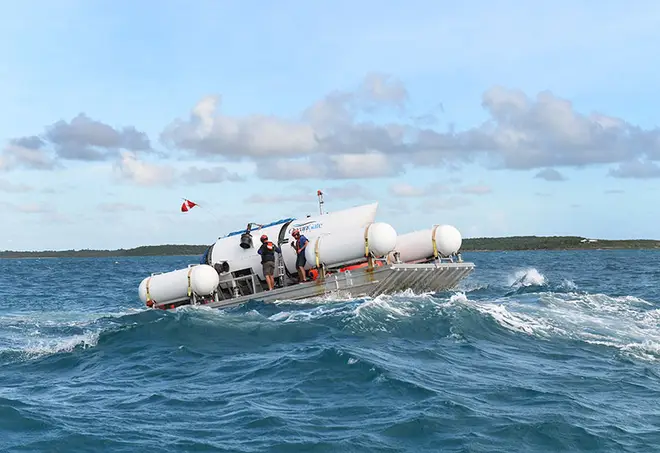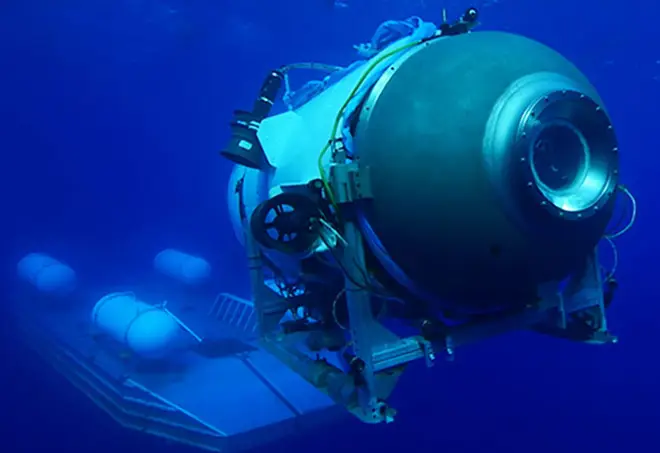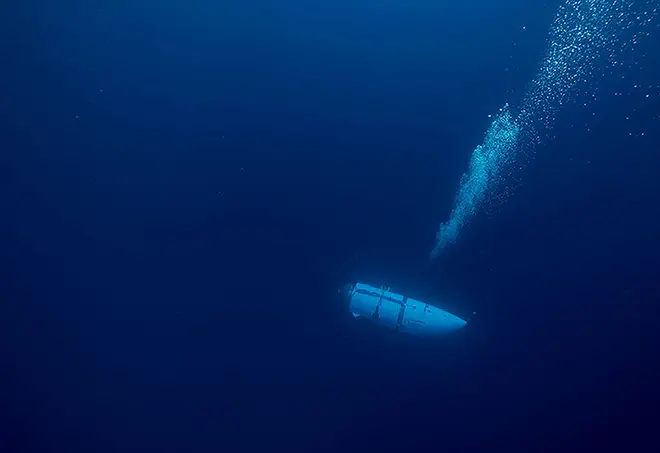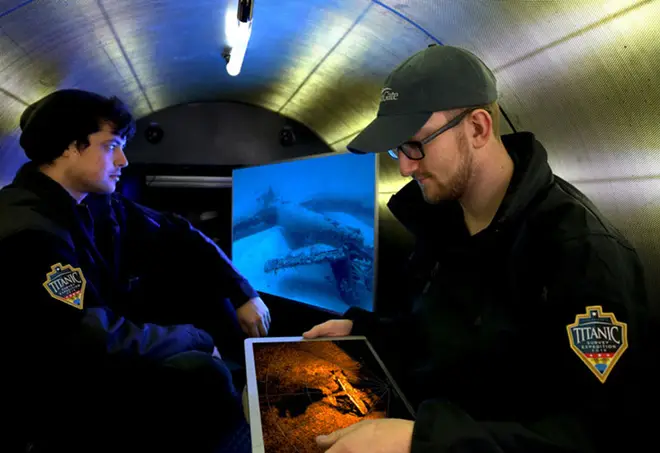
Oli Dugmore 4am - 7am
20 June 2023, 09:46 | Updated: 20 June 2023, 13:10

Not much bigger than a family car, the Titan submersible can descend to 4,000 metres below the sea, carrying four passengers and a pilot.
The submersible, which launches from a bigger platform, has gone missing on a trip down to the wreckage of the Titanic.
The Titan has roughly two days of oxygen left for its passengers, after launching on Sunday with 96 hours of air.
A rescue operation is underway, as US and Canadian coastguards scramble to find the tiny ship and save the five men inside.
Here's what we know about the Titan so far.

The Titan is 670cm long, 280cm wide and 250cm long (22ft x 9.2ft x 8.3ft).
The carbon fibre and titanium vessel weighs 10,432 kg (23,000 lbs) and can carry 685 kg (1,510 lbs).
The ship is propelled by four electric thrusters, and can travel at up to three knots.
The Titan can descend up to 4,000 metres (13,123 feet), meaning it was close to its limit when it disappeared at 12,500 feet.
The submersible has 2D sonar, LED lights with a total output of 40,000 lumens, 4K-equipped external cameras and an underwater laser scanner.
The Titan has room for five people, including one pilot, although conditions are very cramped. The ship has a toilet, although it's not very private as it's right next to the window.
The submersible also has a real-time hull health monitoring (RTM) system, which means the crew can analyse the effects of changing pressure on the vessel as it descends.

The Titan was designed to travel deep into the sea to carry out site surveys and inspections, research and data collection, film and media production, and test hardware and software.
It first went down to 4,000 metres in December 2018, and has been on further successful trips in 2021 and 2022.
But an American reporter who went on a dive on the Titan last year said that the vessel lost communications contact with controllers on the surface for two and a half hours.
CBS journalist David Pogue said that the ship was eventually recovered without anyone being hurt, and passengers were offered the chance to redo their trip.

The Titan is owned by OceanGate Expeditions, a private company founded in 2009 to provide crewed submersible services for researchers and explorers to travel deep into the ocean.
The Everett, Washington-based company's CEO Stockton Rush is the pilot on the voyage that has seen the Titan vanish.
The Titan is one of three submersibles owned by OceanGate.
The other two - Cyclops 1 and Antipodes - have much more modest capabilities, with depth limits of 500 metres and 350 metres respectively. Cyclops 1 served as a testing vessel for the Titan when it was in development.
OceanGate says it has successfully completed 14 expeditions and over 200 dives in the Pacific and Atlantic Oceans and the Gulf of Mexico.


The pilot of the Titan operates the vessel with a reinforced PlayStation controller.
But there is no GPS on board the submersible, and the pilot is instead guided via text message from the 'mother ship' launch and recovery platform above, sent with a USBL (ultra-short baseline) acoustic system.
The descent itself is done with a button that turns from red to green. "It should be like an elevator," Mr Rush said last year, adding: "It shouldn’t take a lot of skill."
A digital display streams a live feed from the 4K cameras on the outside of the submersible.

The Titan's dives last about ten hours, but expedition participants spend ten days aboard a larger ship in total.
Mr Rush said in an interview last year: "There's no switches and things to bump into, we have one button to turn it on.
"Everything else is done with touch screens and computers, and so you really become part of the vehicle and everybody gets to know everyone pretty well."

The Titan is technically a submersible rather than a submarine because it needs a launch and recovery platform to sink and resurface it from the water.
The platform operates in a similar way to a ship's dry dock, launching and recovering manned submersibles by flooding its flotation tanks with water to descend to 9.1 metres (30 feet) which helps it avoid surface turbulence.
At the end of each dive, the submersible lands on the submerged platform, which brings it to the surface in two minutes by filling its ballast tanks with air.